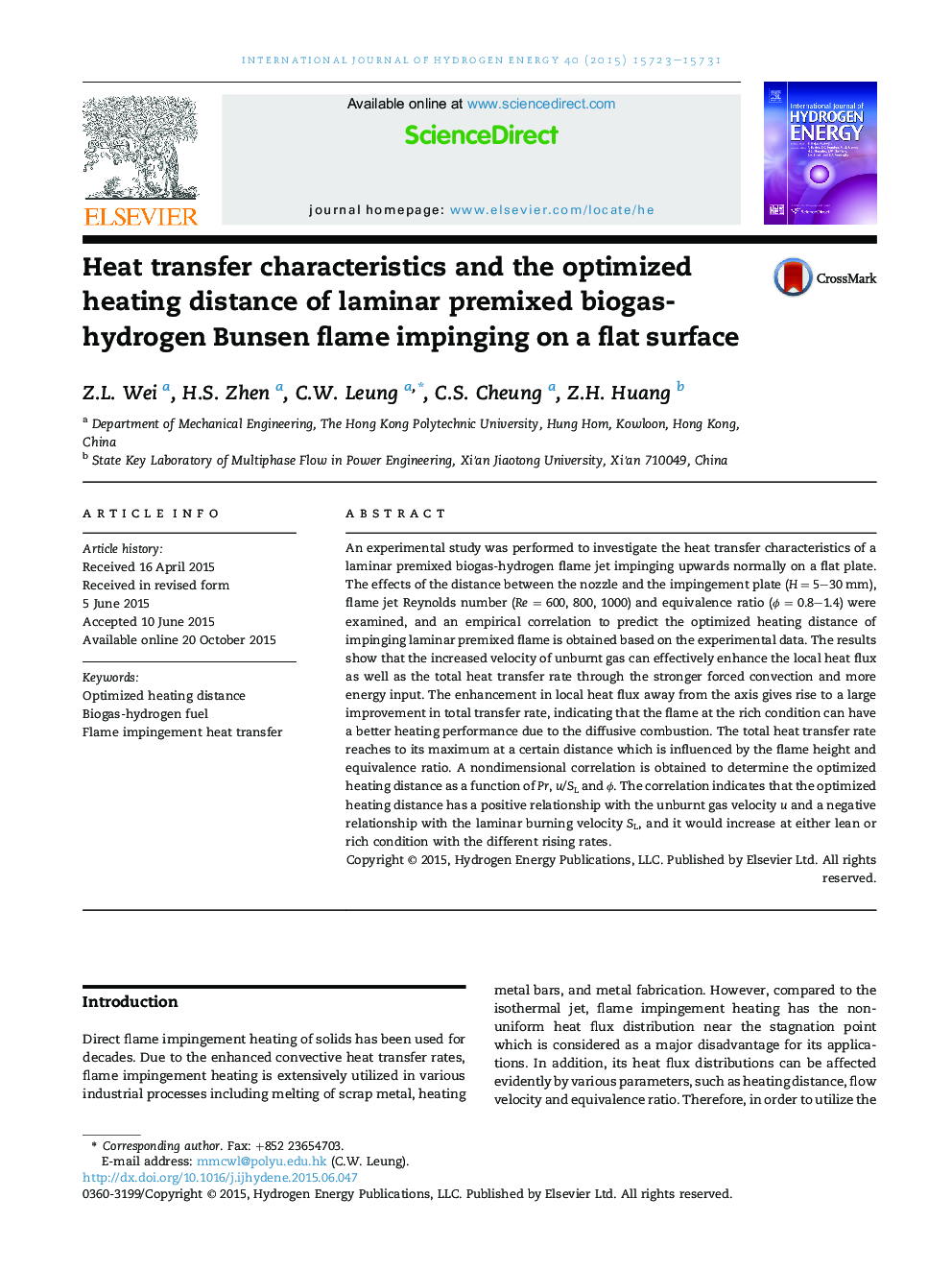| Article ID | Journal | Published Year | Pages | File Type |
|---|---|---|---|---|
| 7713626 | International Journal of Hydrogen Energy | 2015 | 9 Pages |
Abstract
An experimental study was performed to investigate the heat transfer characteristics of a laminar premixed biogas-hydrogen flame jet impinging upwards normally on a flat plate. The effects of the distance between the nozzle and the impingement plate (H = 5-30 mm), flame jet Reynolds number (Re = 600, 800, 1000) and equivalence ratio (Ï = 0.8-1.4) were examined, and an empirical correlation to predict the optimized heating distance of impinging laminar premixed flame is obtained based on the experimental data. The results show that the increased velocity of unburnt gas can effectively enhance the local heat flux as well as the total heat transfer rate through the stronger forced convection and more energy input. The enhancement in local heat flux away from the axis gives rise to a large improvement in total transfer rate, indicating that the flame at the rich condition can have a better heating performance due to the diffusive combustion. The total heat transfer rate reaches to its maximum at a certain distance which is influenced by the flame height and equivalence ratio. A nondimensional correlation is obtained to determine the optimized heating distance as a function of Pr, u/SL and Ï. The correlation indicates that the optimized heating distance has a positive relationship with the unburnt gas velocity u and a negative relationship with the laminar burning velocity SL, and it would increase at either lean or rich condition with the different rising rates.
Keywords
Related Topics
Physical Sciences and Engineering
Chemistry
Electrochemistry
Authors
Z.L. Wei, H.S. Zhen, C.W. Leung, C.S. Cheung, Z.H. Huang,
